Location
The Desengano State Park has an area of 21,444 hectares (52,990 acres) divided between the municipalities of Santa Maria Madalena, São Fidélis and Campos dos Goytacazes in the north of the state of Rio de Janeiro. Elevations range from 200 to 1,761 metres (656 to 5,778 ft). The rugged terrain includes ridges, pointed peaks, sugar loaf mountains and scarps with slopes of up to 75 degrees. Peaks include the Pico do Desengano 1,761 metres (5,778 ft), Pico São Mateus 1,576 metres (5,171 ft) and Pedra Agulha 1,080 metres (3,540 ft).
The park contains the sources of many water courses that supply settlements in the region. Waterfalls include the Vernec, Bonita and Tromba d’Água. The main rivers are the Rio Grande and its tributaries the Macapá and Santíssimo streams, the Colégio River, and the Segundo do Norte, Morumbeca, Aleluia and Mocotó rivers, tributaries of the Imbé River which feeds the Lagoa de Cima (Cima Lake). From that lake the Ururaí River flows to the Lagoa Feia.
History
The Desengano State Park is the oldest conservation unit in Rio de Janeiro, created on 13 April 1970 by decree-law 250. State decree 7.121 of 28 December 28, 1983, republished in the Official Gazette of the State of Rio de Janeiro on 18 January 1984, established an environmental protection area that contained the area of Desengano State Park. The park is managed by the State Environmental Institute (Inea).
The park managers try to curb hunting and deforestation in the park and its surroundings. In June 2015 they seized 35 birds and a shotgun in the town of Monte Café. In October 2015 they found evidence of illegal logging in the town of Agulha do Imbé, in the municipality of Santa Maria Madalena, and charged the owner of the land with environmental crime.
Environment
The Desengano State Park has great scenic beauty, with many rocky peaks and flora representative of the original Atlantic Forest biome. It holds the last continuous remnant of Atlantic Forest in the region. Vegetation includes dense submontane rainforest at altitudes from 200 to 500 metres (660 to 1,640 ft), dense montane rainforest from 500 to 1,500 metres (1,600 to 4,900 ft) and alpine meadows above 1,600 metres (5,200 ft).
About 410 species of birds have been found in the region. 283 species of birds are found in the well-preserved alpine meadows, of which 22 are endemic and have low populations. Endangered bird species include black-fronted piping guan (Pipile jacutinga), solitary tinamou (Tinamus solitarius), white-necked hawk (Buteogallus lacernulatus) and black-and-white hawk-eagle (Spizaetus melanoleucus). The Penelope, Tinamou, neotropical bellbird, black hawk-eagle (Spizaetus tyrannus) and red-browed amazon (Amazona rhodocorytha) are now only found in protected areas.
Mammals include maned sloth (Bradypus torquatus), cougar (Puma concolor), coati, lowland paca (Cuniculus paca), howler monkeys, nine-banded armadillo (Dasypus novemcinctus), tayra (Eira barbara), collared peccary (Pecari tajacu), white-lipped peccary (Tayassu pecari), titis, brown four-eyed opossum (Metachirus nudicaudatus), Robust capuchin monkeys, furão ( Mustelidae species) and crab-eating raccoon (Procyon cancrivorus). In July 1999 the highly endangered muriqui was observed, causing great interest in the national and international scientific community and stimulating investment in research and conservation activities.

Resende is a municipality located in the Brazilian state of Rio de Janeiro. The population is 132,312 in an area of 1094 km2. Resendense refers to people or things that come from or inhabit Resende. It is the oldest town in this region, which has boundaries with the state of São Paulo and Minas Gerais. It is an important industrial, automotive, metallurgical, and tourist center, and headquarters of the world's second-largest military complex, the Academia Militar das Agulhas Negras (AMAN). Resende is of national importance and houses the Nuclear Fuel Factory complex of the "Indústrias Nucleares" of Brasil, the only one able to enrich uranium. Resende's automotive area holds MAN Latin America, the biggest truck and bus factory of Brazil, limited to PSA Peugeot Citroën and Michelin.
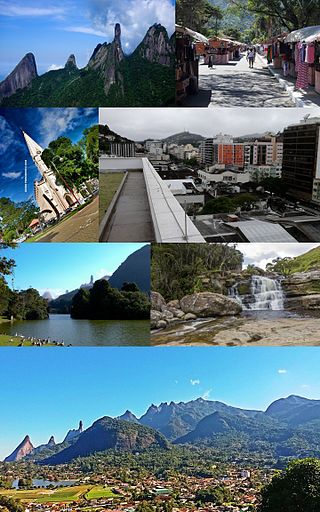
Teresópolis is a Brazilian municipality located in the state of Rio de Janeiro, in a mountainous region known as Região Serrana. The Serra dos Órgãos National Park lies partly within the city limits. The city is known as the home of the Brazil national football team, since it hosts CBF's training ground at Granja Comary.

Itatiaia is a municipality located in the Brazilian state of Rio de Janeiro. With a 2021 population estimate of 32,312, it is the 1,097th-most populous municipality in Brazil. Located in the Mantiqueira mountain range and on the border of the states of Rio de Janeiro and Minais Gerais, it covers an area of 241,035 km2 (93,064 sq mi).

Campos dos Goytacazes is a municipality located in the northern region of Rio de Janeiro State, Brazil, with a population of 483,540 inhabitants.
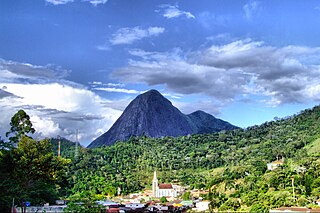
Santa Maria Madalena is a municipality located in the Brazilian state of Rio de Janeiro. Its population was 10,392 (2020) and its area is 816 km2.

São Fidélis is a municipality located in the Brazilian state of Rio de Janeiro. Its population was 38,710 (2020) and its area is 1,028 km2.

Praia do Sul State Biological Reserve is a biological reserve on the island of Ilha Grande, in the State of Rio de Janeiro, in Brazil.

The Ilha Grande State Park is a state park in the state of Rio de Janeiro, Brazil.
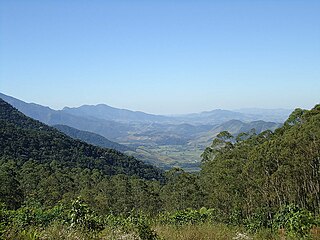
The Mantiqueira Mosaic is a protected area mosaic that contains conservation units in the states of Rio de Janeiro, São Paulo and Minas Gerais, Brazil. The conservation units are of different types and are managed at the federal, state or municipal level. The mosaic provides a level of integrated and coordinated management.

The Pedra Selada State Park is a state park in the state of Rio de Janeiro, Brazil.

The Três Picos State Park is a state park in the state of Rio de Janeiro, Brazil. It preserves a large, mountainous region of Atlantic Forest.
The Paraíso Ecological Station was an ecological station in the state of Rio de Janeiro, Brazil. In 2013, it was absorbed into the Três Picos State Park.
The Bacia dos Frades Environmental Protection Area is an environmental protection area in the state of Rio de Janeiro, Brazil.
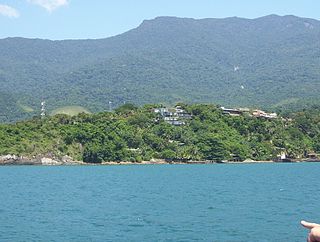
The Ilhabela State Park is a state park in the state of São Paulo, Brazil. It protects an area of Atlantic Forest on an archipelago in the South Atlantic off the northeast coast of the state, including most of the mountainous island of São Sebastião.
The Imbé River is a river in the state of Rio de Janeiro, Brazil.
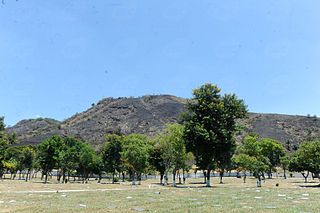
The Pedra Branca State Park is a state park in the state of Rio de Janeiro, Brazil. It is one of the largest urban nature parks in the world. It protects an area of Atlantic Forest in the west of the city of Rio de Janeiro that includes the highest point in the city, the Pico da Pedra Branca.

The Mendanha State Park (Portuguese: Parque Estadual do Mendanha is a state park in the state of Rio de Janeiro, Brazil.

The Restinga de Bertioga State Park is a state park in the state of São Paulo, Brazil. It protects an area of restinga, mangroves and dense rainforest on the coast of São Paulo. The park provides an important ecological corridor from the coastal restinga to the Serra do Mar State Park further inland.

The Rio Doce State Park is a state park in the state of Minas Gerais, Brazil. It protects a large remnant of Atlantic Forest, and includes a system of lagoons rich in species of native fish.
This page is based on this
Wikipedia article Text is available under the
CC BY-SA 4.0 license; additional terms may apply.
Images, videos and audio are available under their respective licenses.

















